Bascinet Nasal
From around 1330 until about 1410, bascinet shaped helmets were the most popular helmet type in medieval Europe. The bascinet was developed from the skull cap, and since approximately 1330 the bottom edge of the high bascinet became more extended and elongated to cover the ears and upper part of the neck. Starting in about 1350 the bascinet began to cover the cheeks and reach the middle of the neck. This shape was in use without any major changes until 1420. During the last quarter of the XIV century the pointed apex continued to be moved back until in the XV century the back side of the skull became almost vertical. Some bascinet helms had an onion-shaped skull. However, this form was common only in medieval Germany. Initially bascinets without a visor were worn under a Great Helm. The visor evolved from the “bretèche” – a detachable nose protection. It was fixed to the helmet with a brow-mounted pivot or hook. Helmets with triangular nasal face protection were popular in medieval Italy and Germany in 1340 – 1370 years.
Our Nasal Bascinet was developed for use in medieval full contact combat and meets the HMB regulations and requirements for nasal/bretèche bascinets. It’s buhurt optimized and has hidden face protection. The bretèche is attached to the skull of the helmet with two rivets that imitate a hinge connection and ends at chin level. Our Nasal Bascinet can be made from mild steel, tempered steel, stainless steel, or titanium. Order Bascinet Nasal now to be ready for your next battle.
Helmet can be equipped with the simon strap under the request.
Be the first to review “Bascinet Nasal”
You must be logged in to post a review.

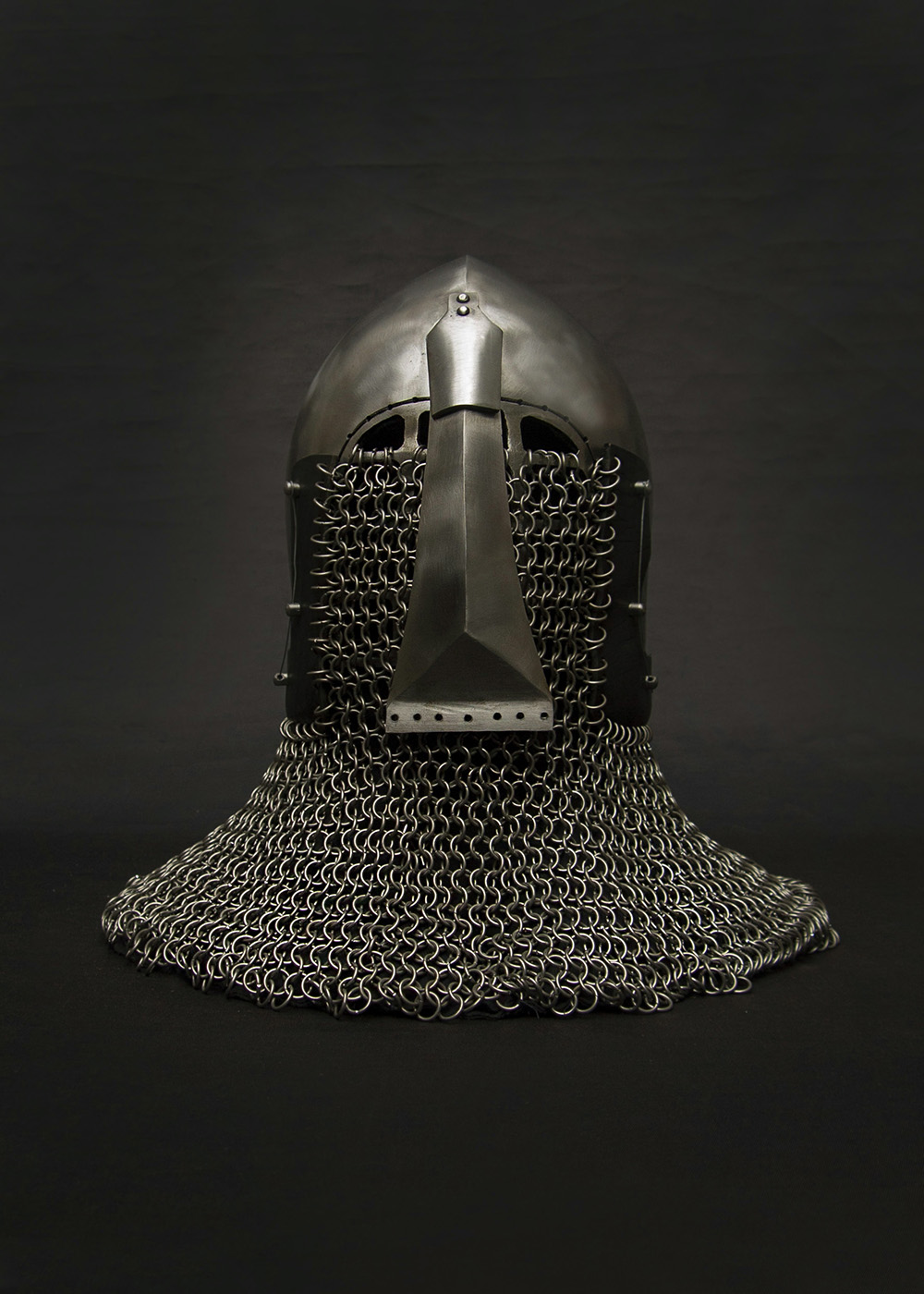
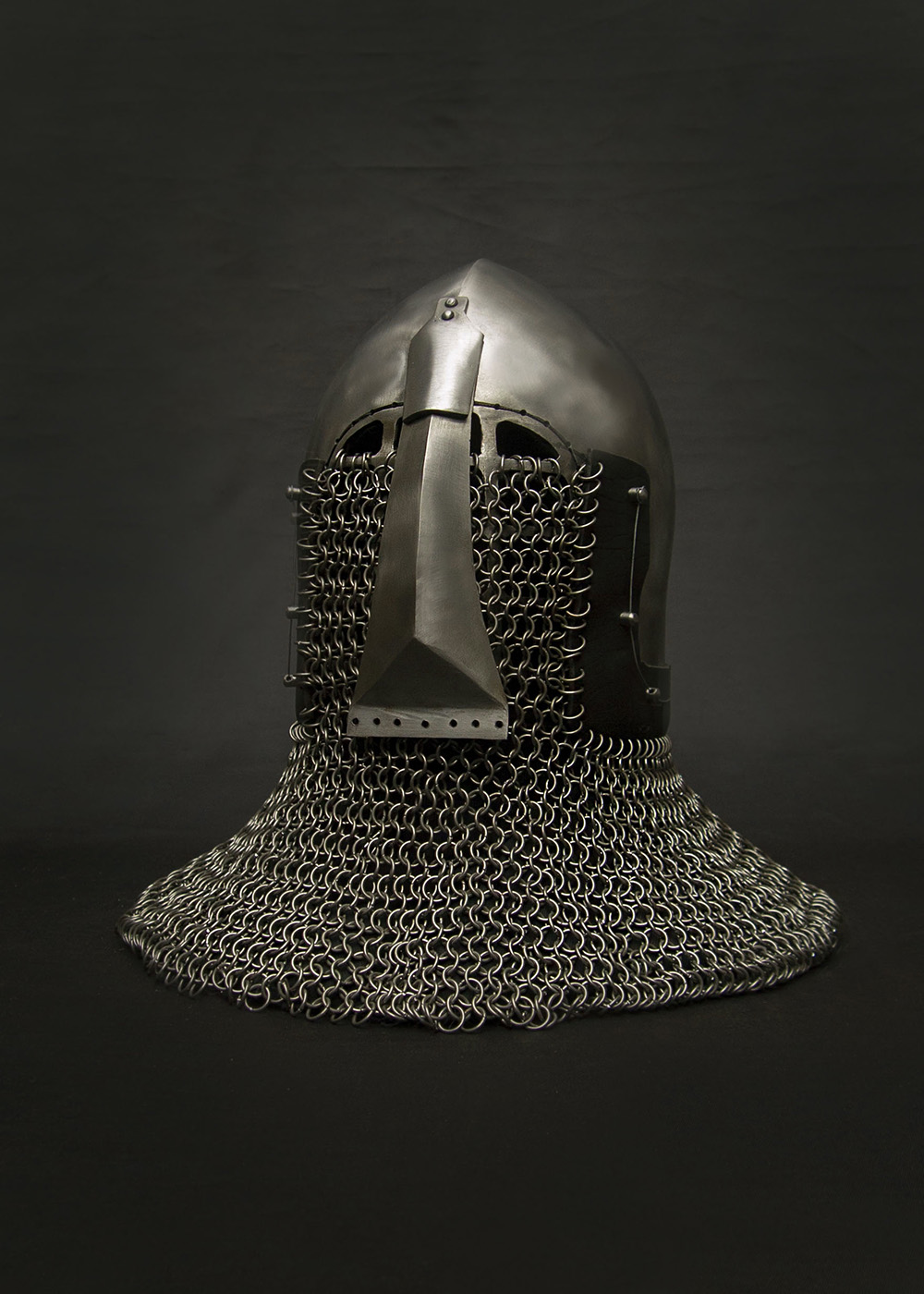
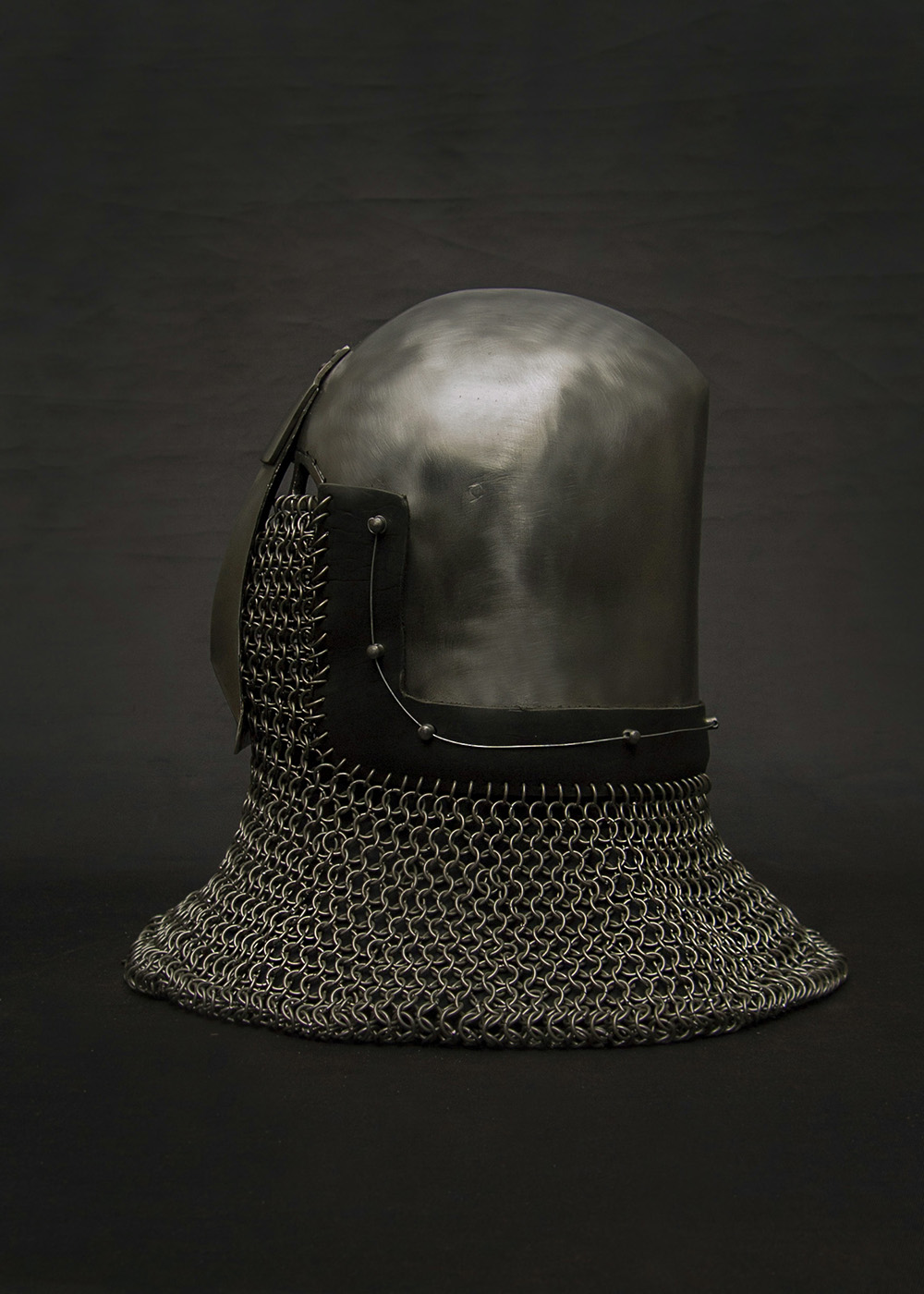
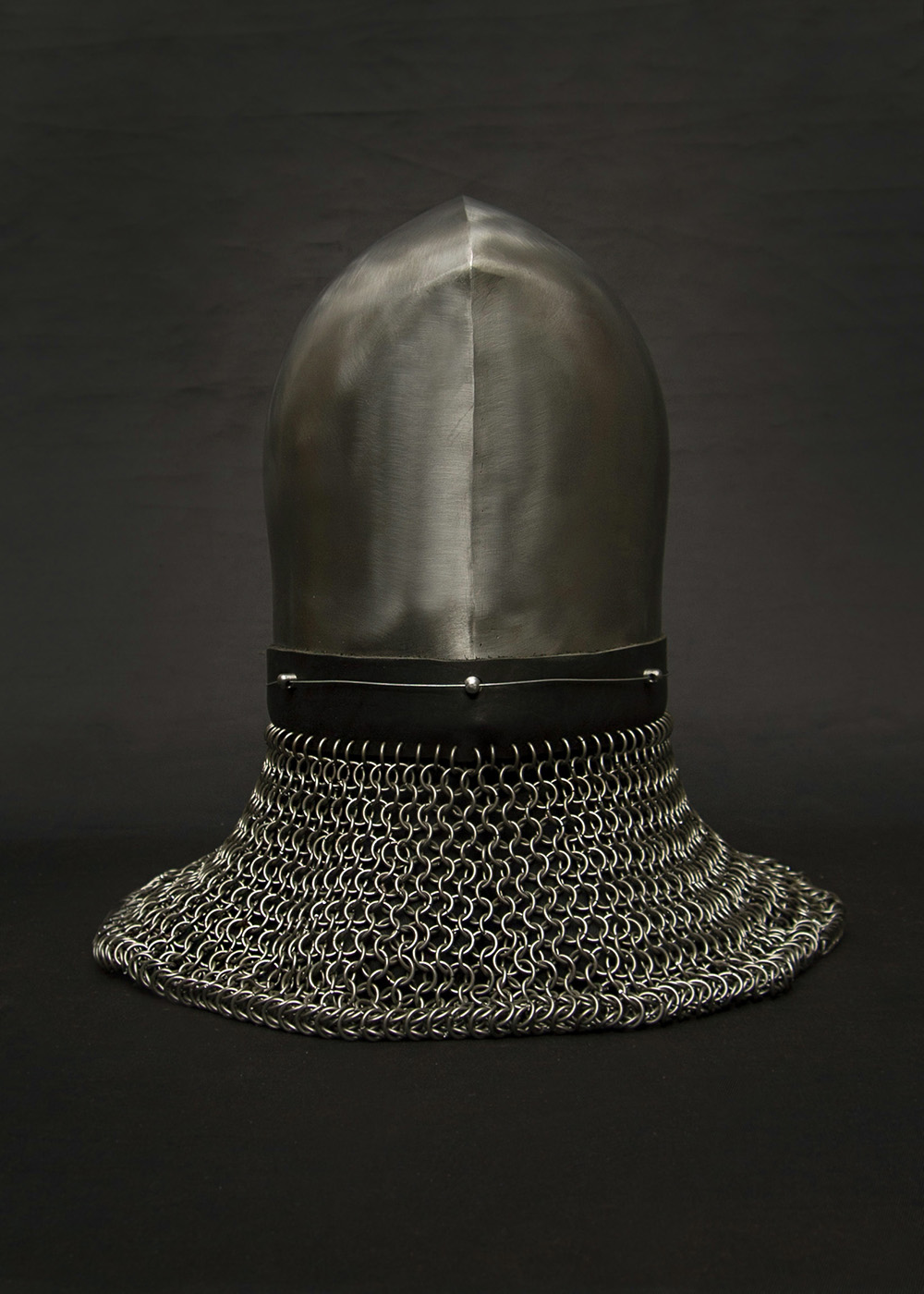
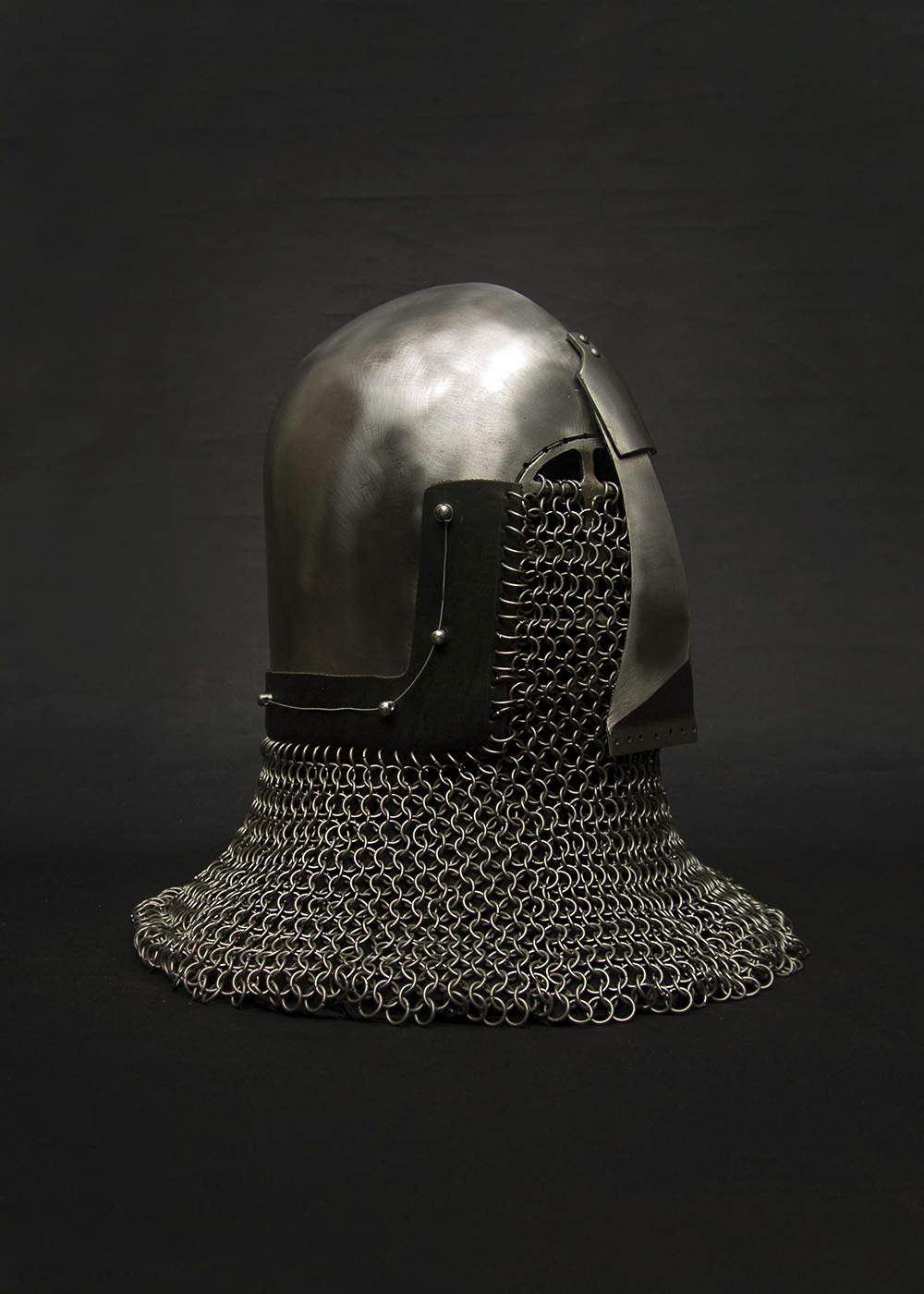
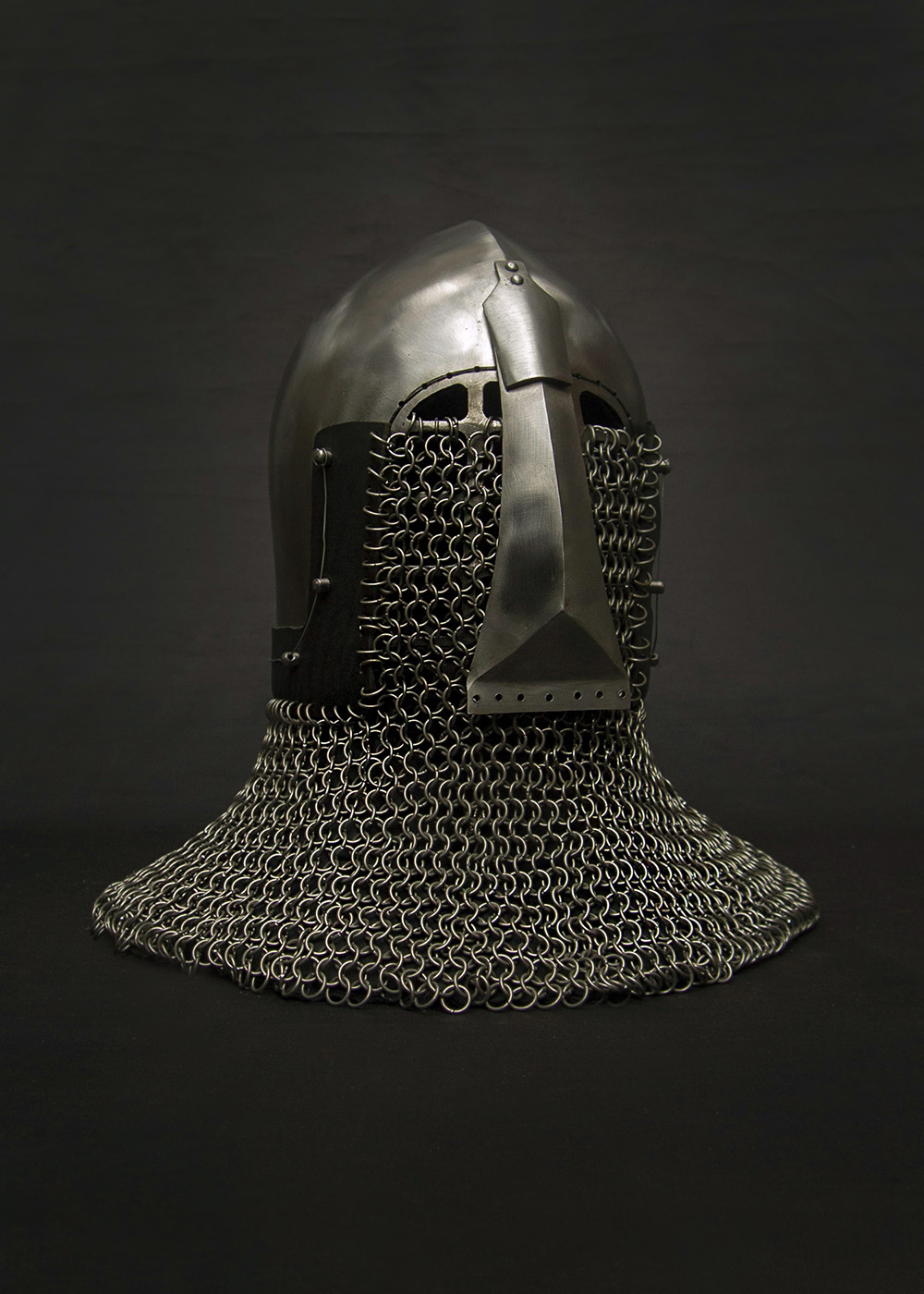
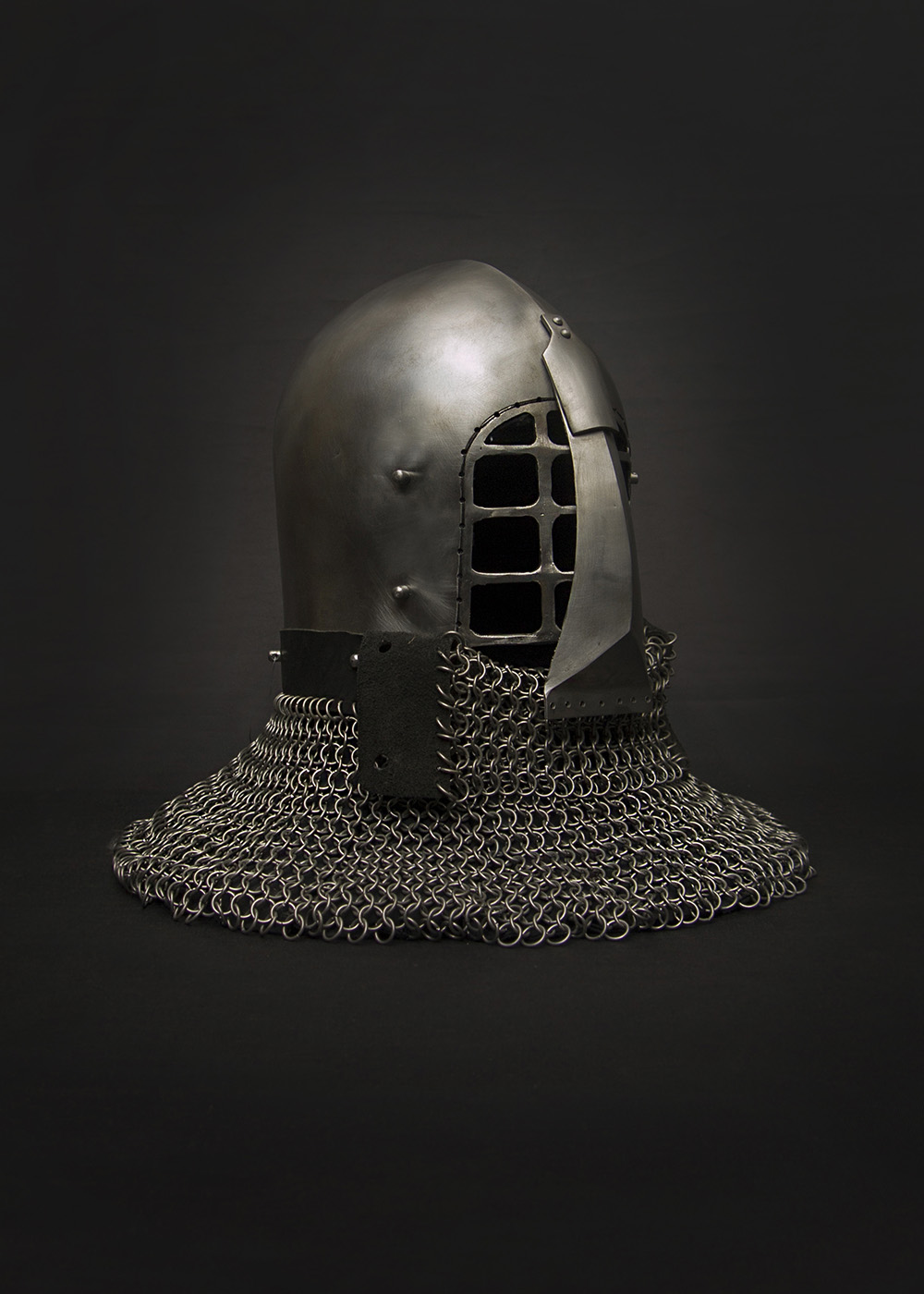
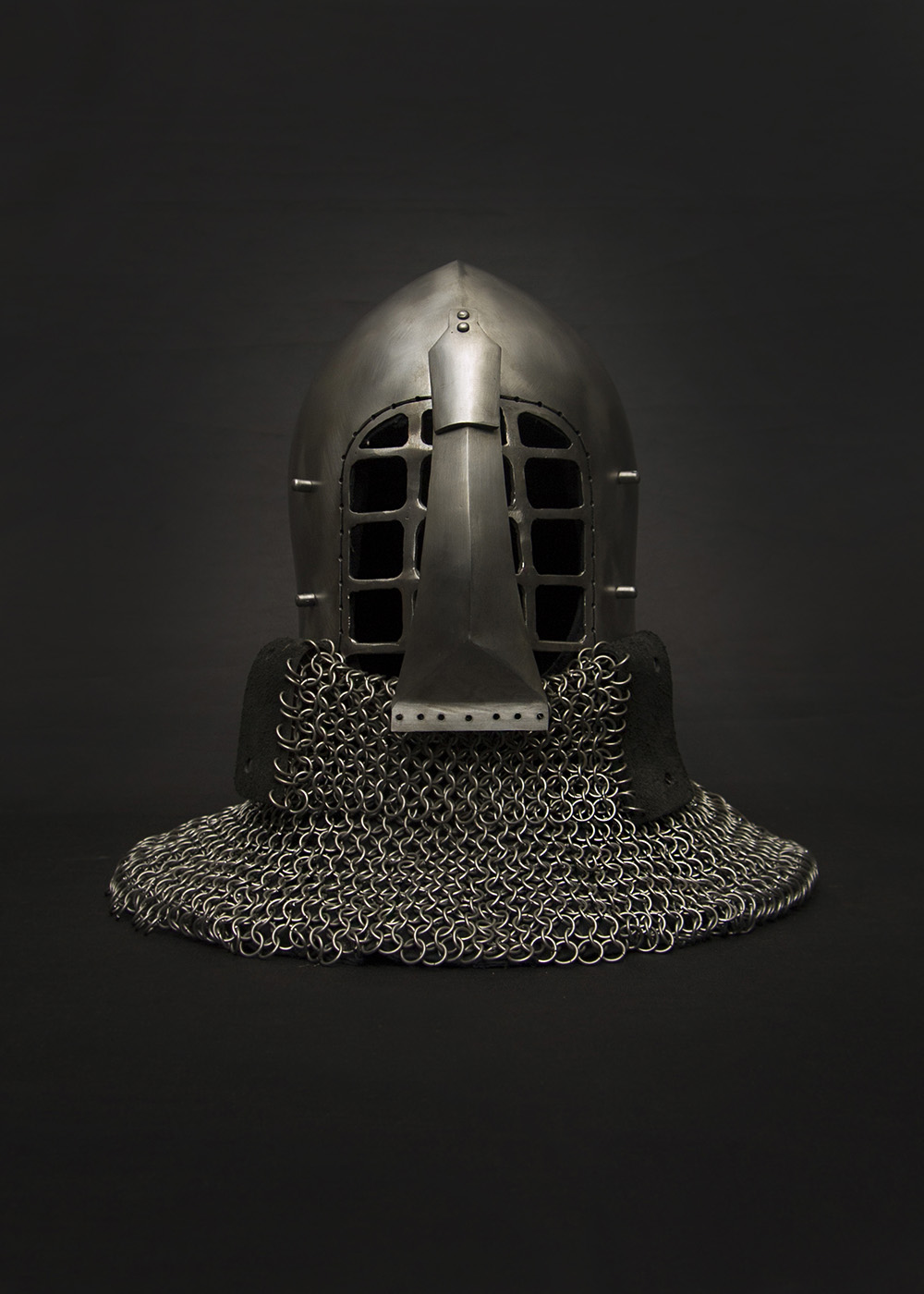
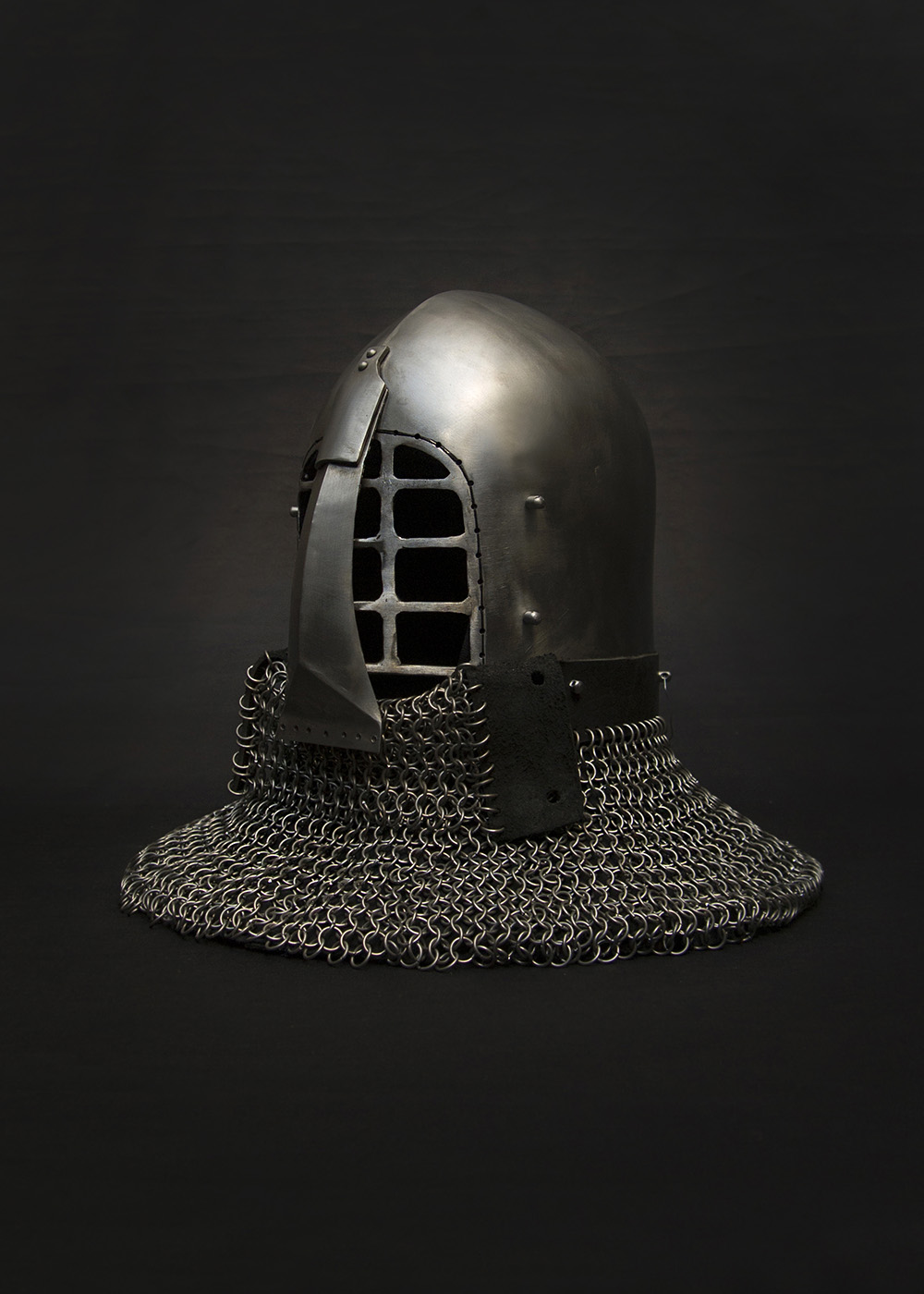
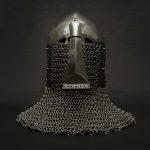
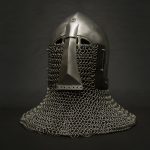
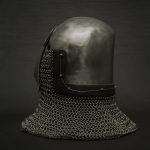
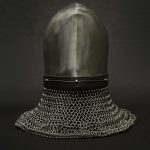
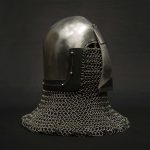
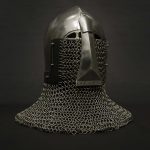
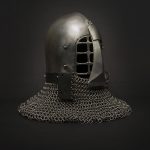
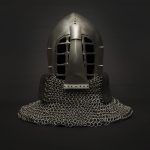
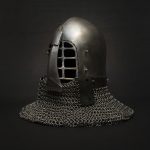
 Shop
Shop
Reviews
There are no reviews yet.